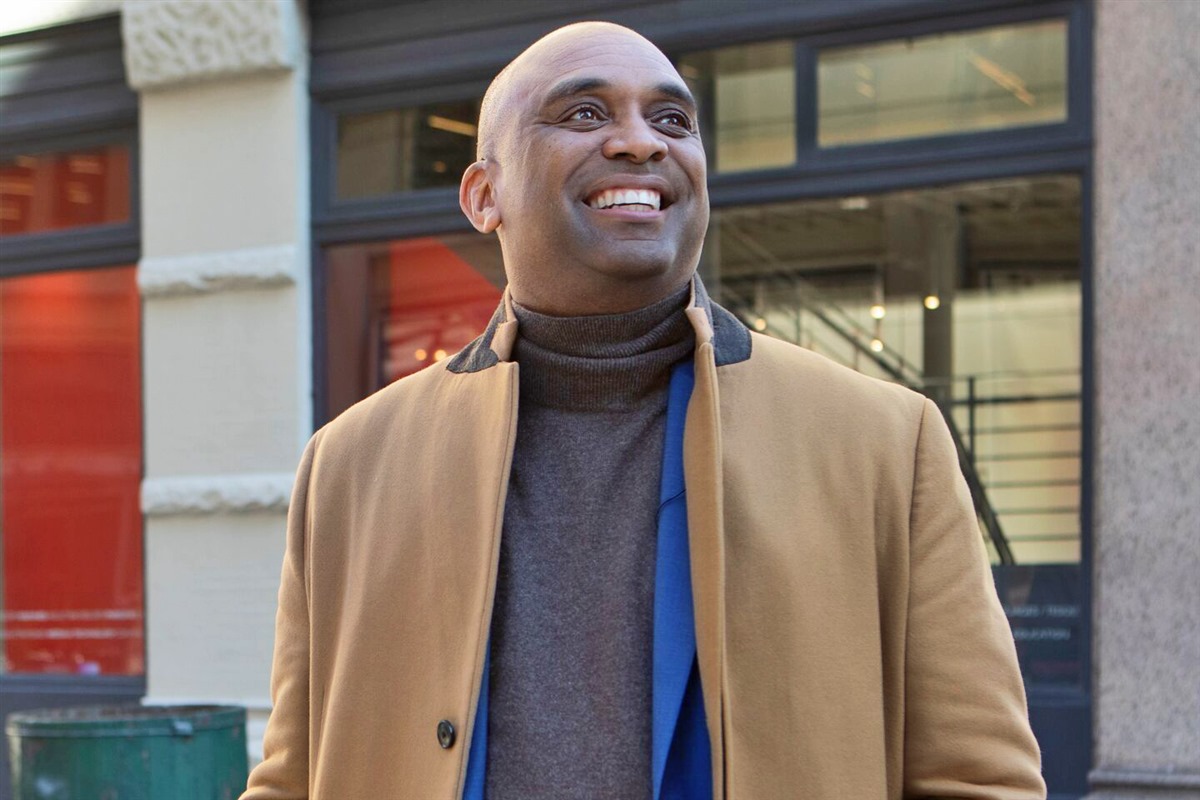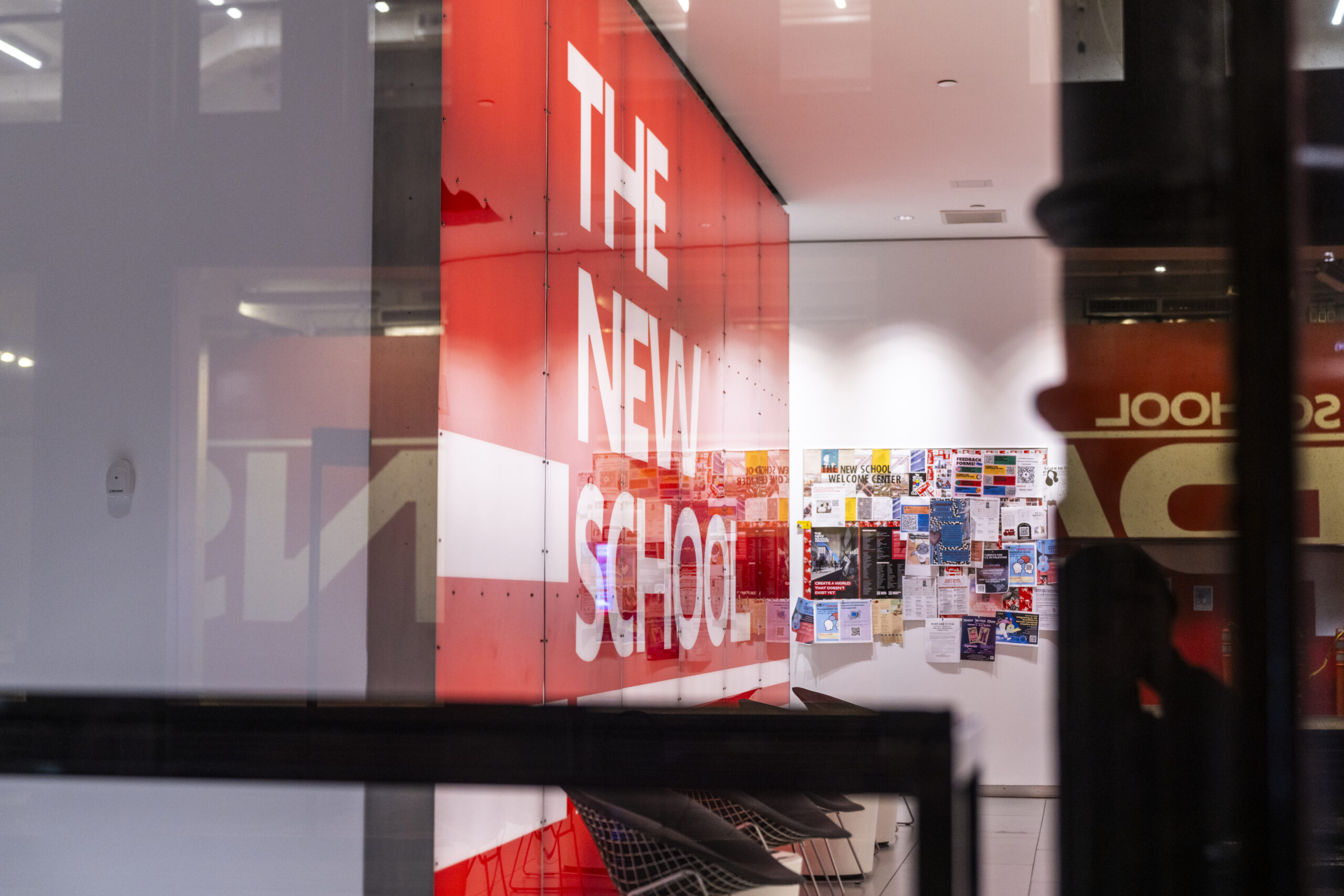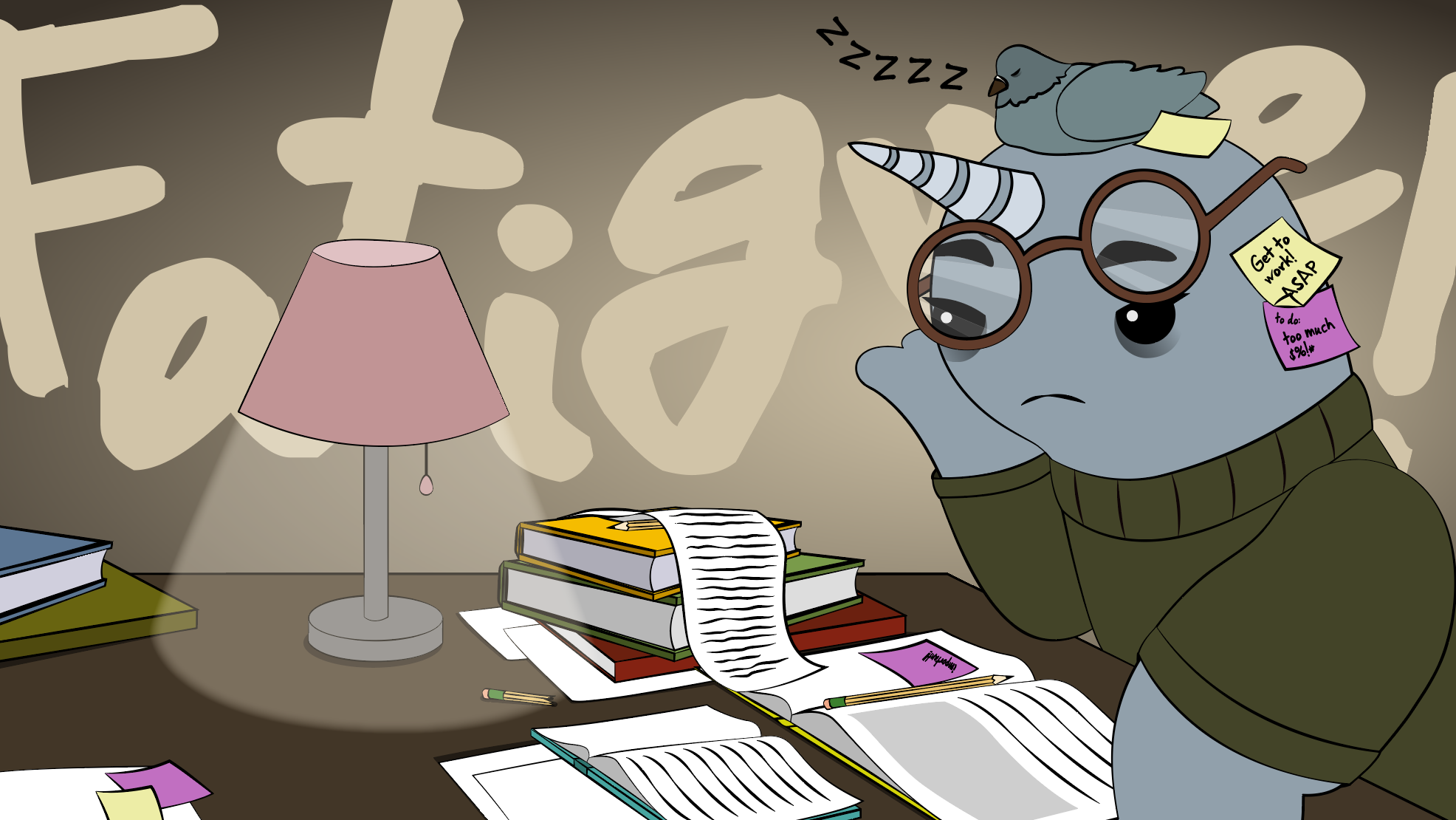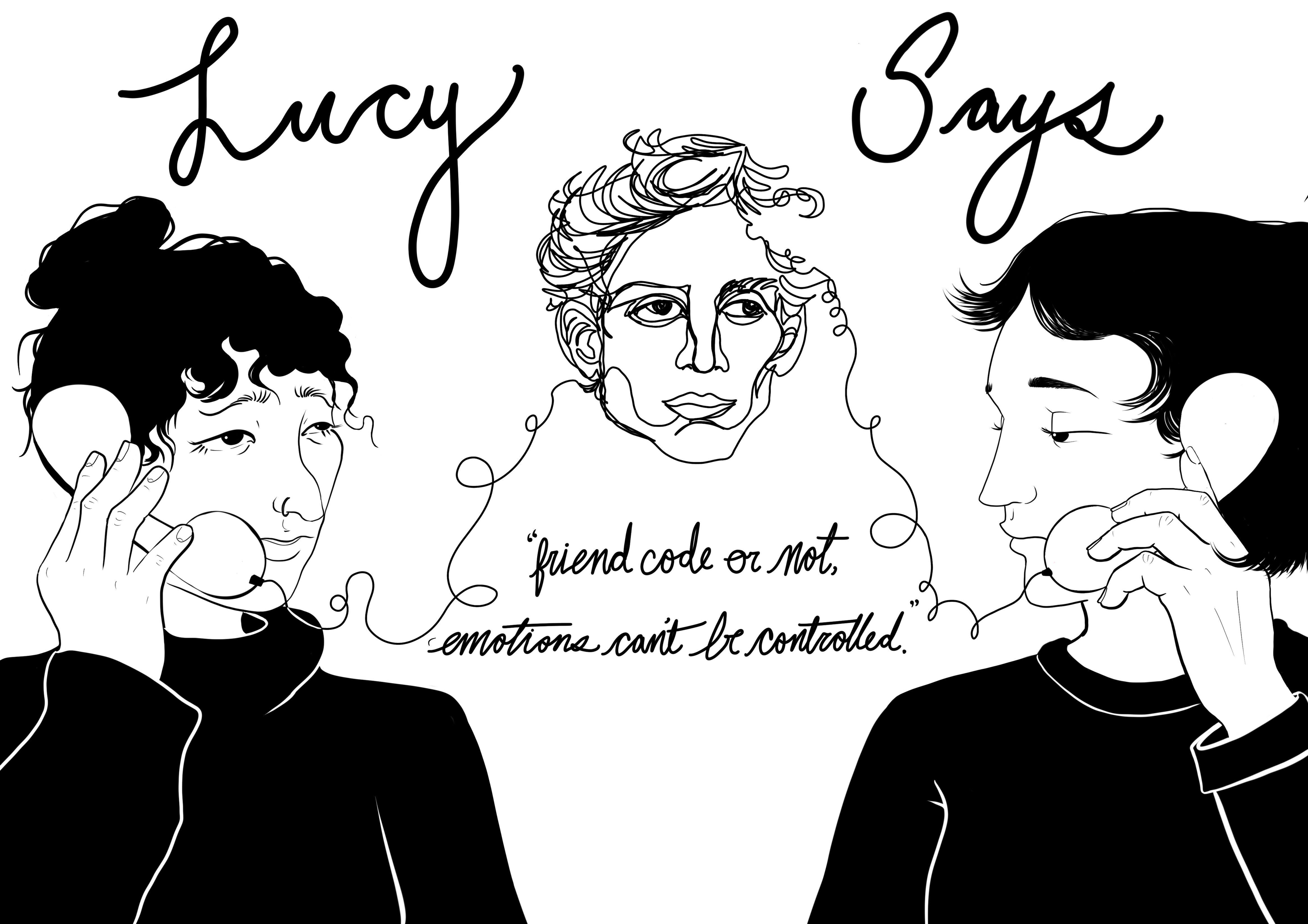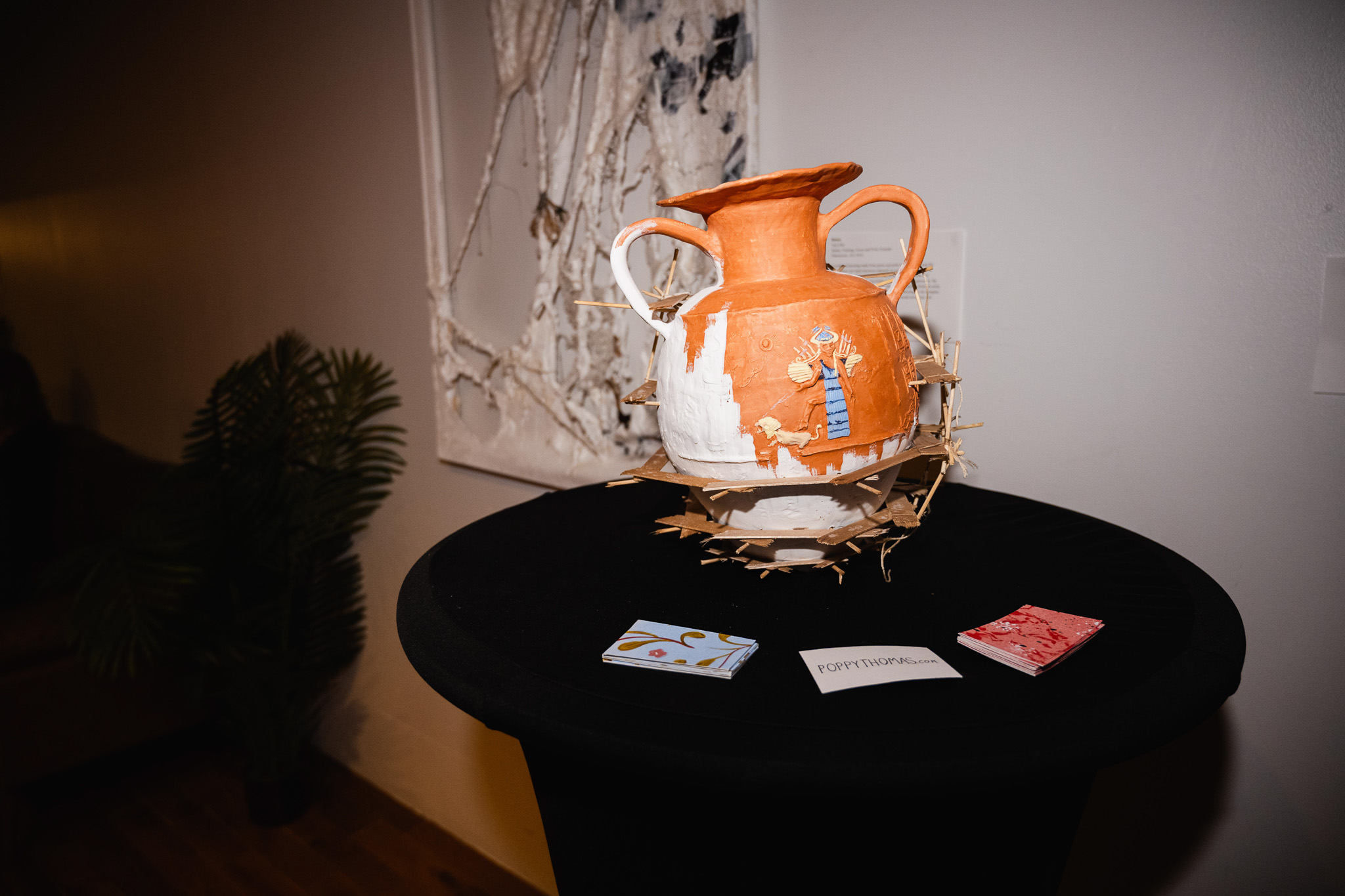Amidst an unprecedented global pandemic and the ensuing economic chaos, The New School went ahead with a Presidential transition that was almost a year in the planning. President Dwight McBride took his place as the ninth President of The New School on April 16th, 2020.
In the past two months, the university has seen students organize a virtual strike in response to the administration’s management of COVID-19, dance students managing their classes without a studio space and being put under a public health quarantine and taking classes at midnight, and other members of our community showing up to class while struggling to take care of their children at home.
We spoke with President McBride on Friday, May 1 to discuss his adjustment to New York City and the university, the virus’ impact on the community, tuition refunds and student deferment, how he’ll address the findings that came from the climate assessment last year, and The New School’s handling of CARES Act funding and budget cuts.
This interview has been edited for length and clarity. It was conducted via Zoom on May 1, 2020 by Co-News Editor Michael Izquierdo and reporter Simon Chen, with Editor-in-Chief Kurt Burger and university spokesperson Amy Malsin present. To read a full transcript of the conversation, click here.
1. What has the transition been like for you,transitioning from a home in Atlanta to New York City?
I don’t know if you know the story. I moved here on the sixteenth of March, which was the day that the city closed; the restaurants closed that night at eight o’clock. And the first thing I noticed was that Times Square, which we passed through, was completely empty. It was the creepiest scene I could have imagined.
The transition was abrupt, is what I call it, and completely unanticipated. There was just no way any of us could have known what we were heading into at that time. I’ve been in this apartment now for almost six weeks, and I think I’ve been outside a total of four times. That also, you know, takes a toll.
2. How do you think COVID-19 will affect the future of the institution? What plans are in place for the summer and fall terms? What do you think the community should prepare for?
Since I’ve arrived, the focus has really been on the university’s finances as a result of that, because the impacts have been real and very swift. And also, we’ve had to focus on thinking about how we plan for our return to campus safely.
I’ve been in conversation with a good friend and colleague who’s an epidemiologist, actually at Emory, and he’s been providing advice and counsel about the progress of the disease, responding to the public health response, the availability of testing, etc., all of which will be things that will be a part of the calculation of how we come back to in-person, face-to-face work together.
Because until there is a vaccine that will really protect us in the way that we would want for our community, we’re going to have to make sure we have a widespread availability of testing, that we would need to put protocols in place for people to be self-evaluating on a daily basis and reporting that. We’d need to have the ability for people who might have been exposed to be quickly quarantined, and we’d need to provide the ability for that to happen.
There are dozens of decisions downstream also that have to be considered. Even something as simple as room capacity. A classroom for example, that might have held 30 people pre-COVID, if we’re still having to practice social distancing until there’s a vaccine, we would be looking at a room that may only hold 10 people. So, what does that mean in terms of section sizes and scheduling classes? And will we have to move into doing smaller sections? Will we need to move more stuff online, some stuff face -to-face, so there’ll be more of a hybrid mix? All of those are calculations that will have to be made. Then you think about residence halls and students who live in doubles or triples, those spaces would likely not be able to be utilized in that way.
The big thing is that there won’t be a light switch moment where we will all just be back to normal. I think this will be a graduated process.
3. Following up with that question, many students have expressed that they would defer for the semester if students are expected to go online next semester. How is the university preparing for that threat in a loss of overall university enrollment and loss to education/academia?
We’ve heard that too, because we’ve been hearing from students and their families. That calculation that some people may make, especially in certain disciplines, that makes sense to me.
But I would say, one of the things we’re looking at, because it does have a direct impact on the finances of the university, and so one of the things that we’re doing now, and again in the message that will come out next week (Note: this is referring to the email sent out to the community on Monday, May 11) it will outline at a very high level, some of the planning work that is going to be happening this summer.
In the message next week, we hope to share that with the community, opportunities for engagement around some of that work with different constituencies on the campus, students, faculty, staff. Also how and when those decisions will need to be made by our board because ultimately, these are the kinds of decisions that they, people who have the fiduciary responsibility for the institution, they’re the ones that ultimately will have to make decisions.
We’re doing active planning that will look at different scenarios that anticipate what those enrollments will look like in the fall. We’re not necessarily counting on this as being business as usual. We’re having to plan for scenarios that we don’t yet have the information to know what they’ll actually be.
That’s the hard part about this kind of planning — we won’t actually know the data on enrollments until August, once we actually are very close to the beginning of the semester. That data point will be one of the most important in terms of the kinds of actions that we’ll need to take financially to safeguard the future of the institution, because that’s the most important thing for me.
The New School will be here beyond this crisis. There’s no question about that. We will get through this. I know it.
4. How is The New School meeting students’ requests for tuition refunds during these unconventional teaching experiences, esp. since some programs couldn’t function properly online?
It’s tough because there are real financial implications for every decision that we make, because we are, in this sense, we’re not unique in this way in higher education. Most private universities in higher ed are very tuition-dependent and do not have large endowments, and that’s our story too. The vast majority of our budget is based on tuition dollars.
In this moment of exigency, which is really where we are, we have a group of deans, the executive deans at the university, the Provost, we have some trustees and other leaders that we will be engaging. We’re going to be looking and we’re already doing a lot of benchmarking to see how our peers across higher education are also thinking about this because we want to be thoughtful. We want to make sure that we’re availing ourselves to the very best information we can in a very short period of time, to make the very best decisions that we can for our community and for our students and their families.
When we do make an announcement about what our Fall [Semester] will look like and what Spring [Semester] will look like, I hope at that point, we are in a position to announce where we’ve landed about issues of pricing as well.
5. According to emails sent from Michelle Relyea to students, The New School has received $2.498 million dollars of federal CARES Act funding to support students in need. Public records show The New School received close to $5 million in total in CARES Act funding. What is the rest of the money going towards?
Those funds were a part of the stimulus package, the first stimulus package. And the way that we split those funds was that half of them, we return that money, $2.5 million, to the student emergency fund in order to assist those students who are most in need. I feel good about that decision, as you know, I thought that was important. I myself contributed to that fund and made a pledge when I first started. The other $2.5 million went to backfill [university finances], in some ways. The money that we had to return, in terms of housing and dining resources, that was about $9 to $10 million total that we returned students.
We also froze tuition for next year. The board had decided prior to my arrival on a 3.8% increase to tuition. One of the things that I went to the board chair about was whether there was any room for us to rethink that decision, and she was also very supportive. We took that to the board and they made the decision to freeze tuition for next year. But again, that is a decision that we also are fully aware will be another hole in the budget that we had anticipated for next year, so that’s another roughly $11 million in net tuition loss.
We put up $1 million, in addition to that $2.5 million, because the government came out with guidance, candidly, that was quite hateful to my mind and that certainly did not align with the values of The New School that limited the students that we could support with the CARES Act funding. We added another million to really support students who were international students, students who were DACA students who couldn’t be supported on CARES funds. We thought it was very important for us to make sure we were supporting all the members of our community. That $3.5 million total, we have now expanded. We supported in total over 2,400 students and their requests. We know there’s more need. We know there is more that we have to do and I’m hoping that we can continue to fundraise and reopen the fund in the Fall. I hope we’ll have some more government support to help us do that.
6. Last year, The New School released its climate assessment study results that evaluated how the university upholds equity, diversity, inclusion, and social justice (EDISJ) values and its contribution to student success.
It has been expressed that many students of color disproportionately experience microaggressions in classrooms, feel unattended to, and emotionally exhausted by bearing the weight to be the activists for diversity, equity, and inclusion at the university.
How will you as the President make sure that students of color feel attended to and supported through their academic careers, decrease the culture of microaggressions on campus, and promote belonging and community w/ your most marginalized students?
I think diversity, inclusion, our commitment, and our values around social justice should animate all of our work.
I think what I am interested in doing as President is making sure that we don’t lose sight of that work in this moment of exigency because it’s easy to be distracted in a crisis.
Though there may be things that we wanted to do that we can’t do that have a large price tag, there are things that we can do around the process, around how we work. There are things that we can do in terms of the kinds of policies that we create, and how we hold ourselves and each other accountable as a community that I think we can do. That doesn’t cost money. They just take some time and some effort and some focus.
If we are not creating a community in which everyone can bring all of who they are to their work, to their workplace, then we are failing to utilize the incredible and extraordinary talent that we have brought to this place to do this important work. I think when people can bring all of who they are to the work that they do, that’s when they perform at their best and at their highest.
Diversity and inclusion work has to be more than just a buzzword, we have to really put the processes in place to make sure that we’re living up to those values, and that’s from everything we do around hiring, around admissions, to how people come into the organization. More importantly, once they’re here, what kind of experience we’re creating for our community, for our students, and our faculty, and our staff.
7. What policies and programs do you have in the works already to make sure not only students of color feel supported, but faculty of color as well? As groups like the Lang Social Justice Committee have begun to have those conversations.
Melanie Hart and I are beginning to have conversations about how to bring that work that’s happening in different spaces across the campus together. And I think part of that is about building capacity in her position and then that office to be a sort of catalyst, the connective tissue that brings our efforts together in a more strategic and collaborative and unified way. So that it’s not just what Lang is doing or what the Schools of Public Engagement is doing, or what any individual place is doing, but how do we leverage that work in such a way that we’re all advancing the goals of the institution, and our work in social justice, and in diversity and inclusion?
In my last position at Emory University, I hired our first Chief Diversity Officer for the university; we didn’t have one. Part of the reason that I thought we needed to do that was that there was good work happening across the campus, but none of those people were working in concert with each other. There wasn’t a university strategy that we were all committed to that we had all come together to create so that our work was moving the university forward together. And so, I called together a group of any and everyone doing diversity and inclusion work across the campus, leading that work in any unit they were in, and I asked them to meet over the course of about six months. They were the ones that actually were the architects of the position itself, so they gave me recommendations back about what we should be looking for in someone who was going to come into this role. What were the things that were going to add value to the work that was already going on? What was powerful about that too, though, is that first meeting that we had, for many of them it was the first time they were seeing each other, or even made aware of each other’s work.
And so, figuring out the pieces of this work that are happening in different parts of the university, and how we leverage that work, so that we’re not working at cross purposes, but that we are creating a unified strategy that allows all of us to be doing the things that we have different strengths in this work, but that we’re doing it in a way that meets our institutional goals.
8. It was recently announced that the university’s entire leadership team had taken 12% pay cuts, and you and the Provost took a total of a 15% pay cut. How did you and the board of trustees come to this number and negotiate that administrators would be taking pay cuts, but also you and the Provost would take an additional percentage?
Part of what we were trying to do was to think about, it wasn’t just that piece of that letter, it was everything in that letter, and how we got to the overall number that gets us pretty far down the road of the kind of pain that we know we’re all going to be experiencing this Fall. It will not get us all the way there…The actions we’ve taken will not get us to that $130 million. They get us part of the way there, and that’s the work that is happening this summer.
In addition to the percentage cuts, as for everyone else across the campus in terms of our employees, there was also the cessation of the retirement benefit contributions. And that’s another important number because that represents the equivalent for all of the members of the leadership team another 10% in equivalency to salary.
That was important to me, it was important to the Provost. There was no question, among the leadership team when we came to them and talked about these numbers. There was no hesitation. Everyone knows and respects and understands the seriousness of the work that we have to do. And no one blinked, candidly, and I was proud of the team at that moment, as I’m proud of all of our colleagues.
This is hard work because it affects people personally. I mean I don’t underestimate that, and I don’t take that lightly, the number of people that we had to furlough and lay off. Those people behind those numbers are real to me. It’s one of the things even now when I talk about it, I still get a little choked up because those are people we had to, in some ways let go, not because they’ve done something wrong or they weren’t doing their jobs, but because we could not any longer meet our obligations to them financially, and that’s painful.
Not all of the questions we asked President McBrides focused on COVID-19. We also got insight to his favorite spots in New York City and his experience at Emory University.
9. What are your favorite NYC spots? Favorite parks? Favorite food spots? And why?
I’m excited about Broadway shows and I’m excited about theater more generally. That’s something that’s been a big part of my life. I’ve been on theater boards (Note: McBride served on the board of directors for About Face Theatre in Chicago) in the past, I’ve done a little bit of theater myself. I know that there’ll just be tons of that that I’m looking forward to.
I bought season tickets to the opera next year, the Met. I was excited about that; I picked my series and I was looking forward to that.
Everyone in New York wants to share their favorite restaurant with you, and so over the last five months of visits I have been collecting restaurant recommendations on my iPhone in my notes, and I’m looking forward to trying some of those places.
I have a few good friends here, one from graduate school, one from Chicago, and a few others that I’ve known from different points in my life all of whom have found their way to New York. They were all very excited and had taken it upon themselves to make sure I got introduced to New York properly and I think in some ways they’re all more disappointed, even than I am, about how things have started out. There are a lot of things I’m excited about once we’re able to safely get back out into the world.
10. What experiences and learnings are you taking from being a Provost and Executive Vice President for Academic Affairs and bringing them to your role at The New School?
Those are things that attracted me early on as an undergraduate before I even knew I was going to go to graduate school and do a PhD. I truly missed that part of my life. I was able to continue at Emory doing some of the publishing work. I co-edit a journal, the James Baldwin Review, which we continue to publish — It’s now in its sixth year — and we brought that from Emory to The New School. So we’ll be publishing our first issue here in the fall under our new imprimatur at The New School, which I look forward to. I’ve continued to try to be active in conferences and to write the odd essay here and there.
I am also a co-editor of a book series where we’ve published over 30 books. It’s a series at the University of Illinois Press, and it’s called the New Black Studies. It really has published a series of books that push the envelope of what kind of work can and should be accommodated under the rubric of African American Studies. Particularly it’s been interested in work that is focused on Queer Studies, work that is focused on feminism, Black feminism, work that’s focused on Diaspora studies, really looking at racial blackness as a construct across the Diaspora — decentering America in some of that work. It’s really made some important contributions in some of the work that we were able to publish around class analysis in the black community. So I’ve been really pleased with that. And we have a few more books that are in that pipeline. That series has done very well over the last, I think we’ve been doing this now for 15 years, if I have that right. We’ve been at it for a while, and I’m very proud of the work we’ve produced.
This interview has been edited for length and clarity. It was conducted via Zoom on May 1, 2020 by Co-News Editor Michael Izquierdo and reporter Simon Chen, with Editor-in-Chief Kurt Burger and university spokesperson Amy Malsin present. To read a full transcript of the conversation, click here.

